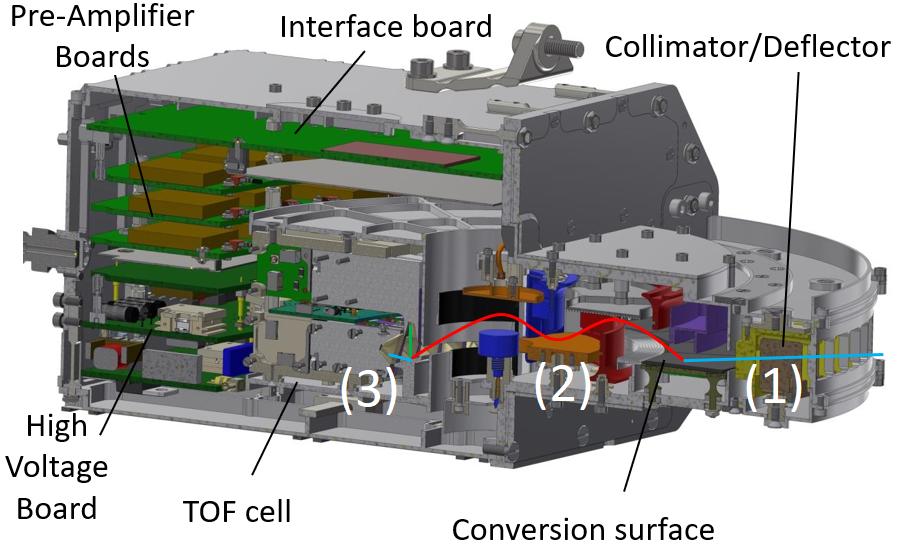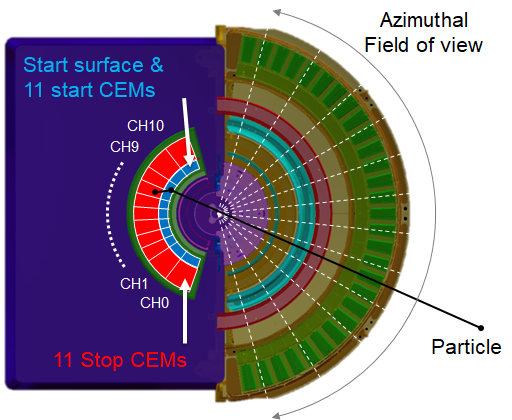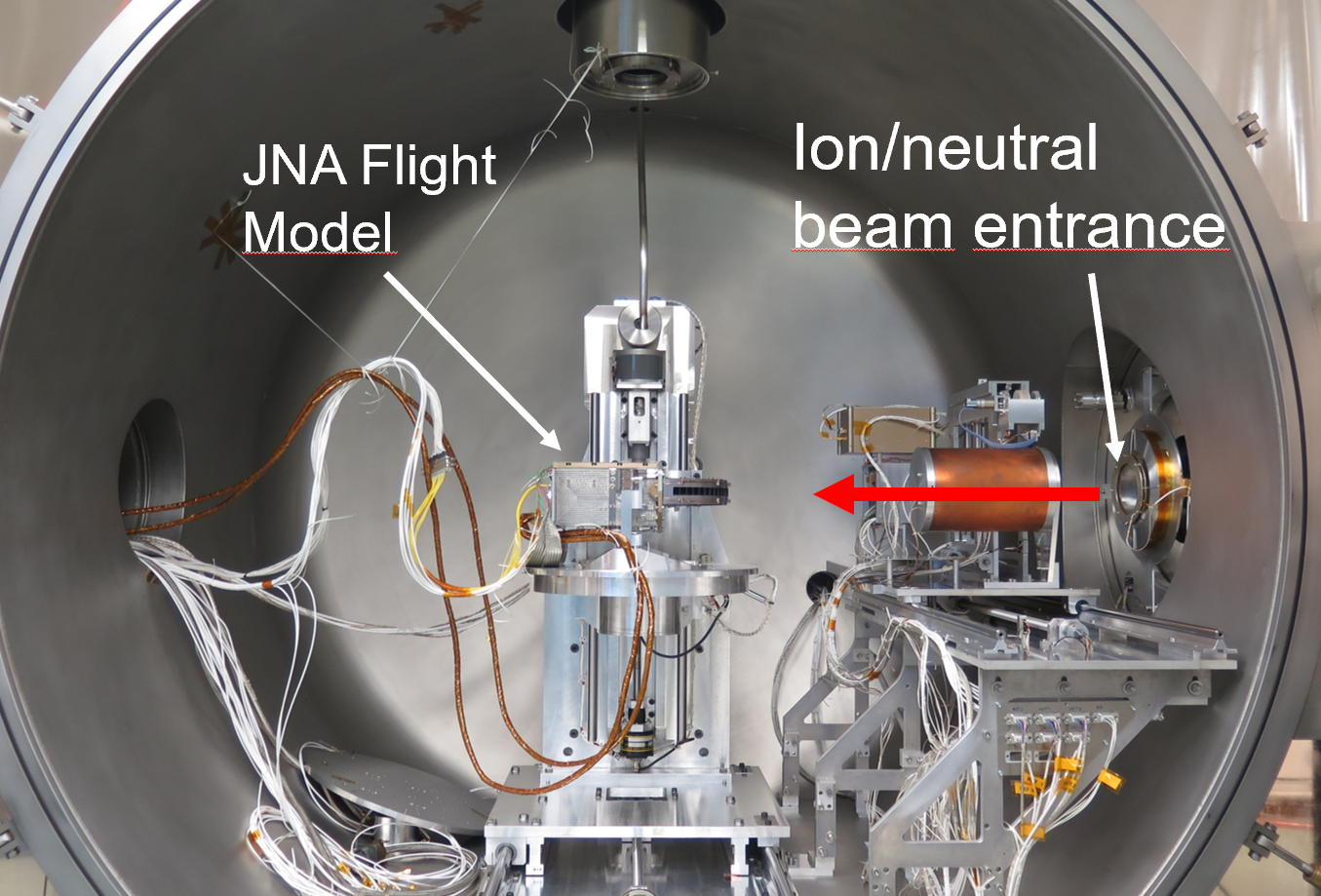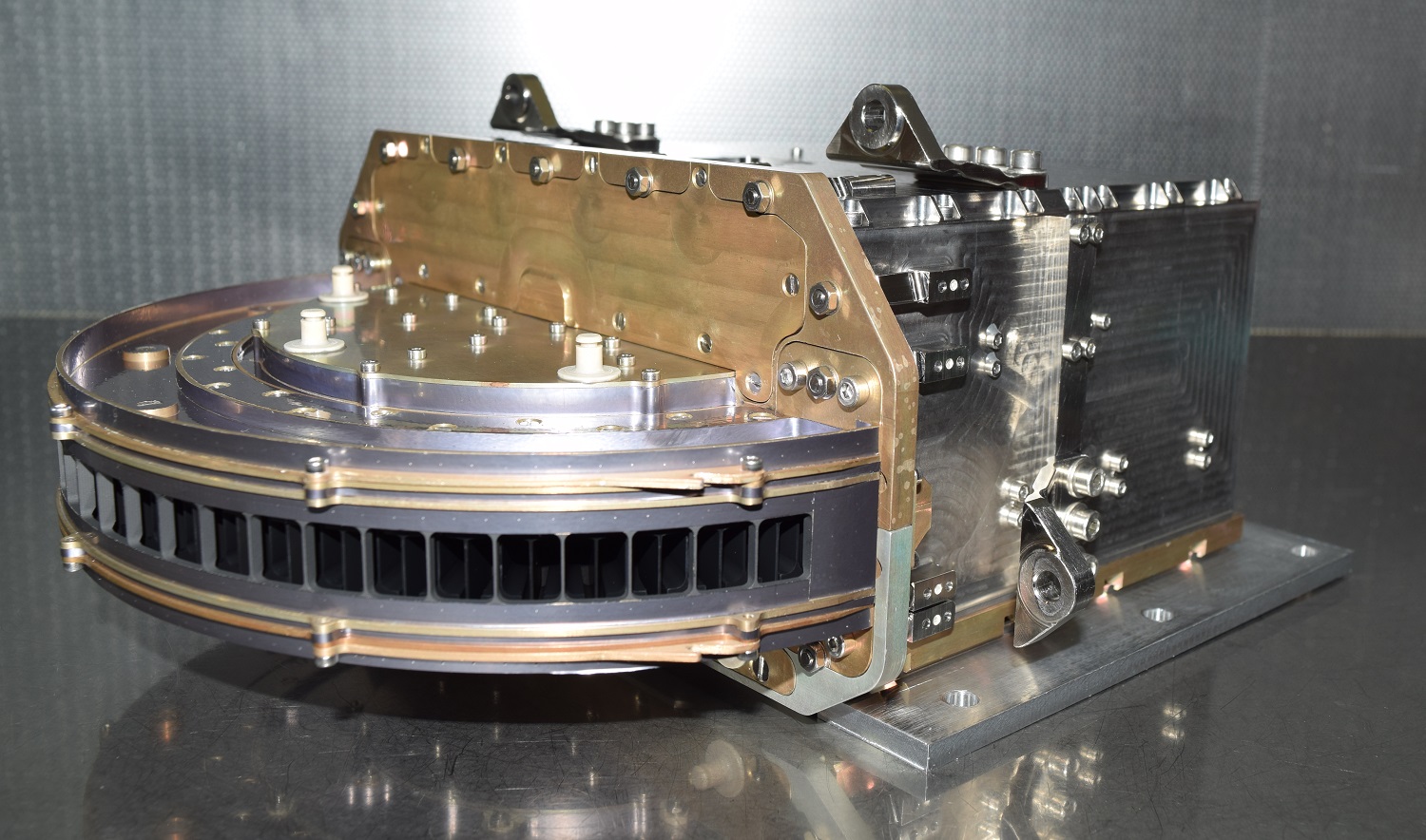Calibration results of the Jovian Neutrals Analyzer onboard JUICE/PEP
- 1Swedish Institute of Space Physics, Box 812 SE-98128 Kiruna, Sweden
- 2Japan Aerospace Exploration Agency, Kanagawa 252-5210, Japan
- 3Physikalisches Institut,Universität Bern, Sidlerstrasse5, CH-3012 Bern, Switzerland
1. Introduction
The Jovian Neutrals Analyzer (JNA) was developed as part of the Particle Environment Package (PEP), a suite of particle instruments onboard the JUpiter ICy moon Explorer (JUICE) spacecraft. JUICE will visit the Jovian system in the early 2020s to perform detailed observations of Jupiter’s icy moons and their complex interaction as a whole [1]. Part of this complex interaction can be probed through the remote observations of Energetic Neutrals Atoms (ENA).
The Jovian Neutrals Analyzer was designed to detect low-energy ENAs produced in the Jovian system by charge exchange in the Io plasma torus, as well as when co-rotating plasma impacts the icy surfaces of Jupiter’s moons. JNA was designed, developed and calibrated at the Swedish Institute of Space Physics in Kiruna. Here we report on the performance of JNA based on the results from the calibration campaign of the JNA Flight Model.
2. Instrument design
JNA’s design takes heritage from ENA instruments such as CENA on Chandrayaaan-1 and ENA on Bepi-Colombo [2, 3] and uses the same measurement principle: (1) ENAs enter the instrument through a set of collimator blades and are converted to ions upon impact on a conversion surface (polished Si surface coated with Al2O3). (2) ions are energy-analyzed using a wave energy analyzer, which also guides the ions into the Time-of-Flight (TOF) cell where (3) the speed of ions is measured. The TOF cell comprises of a start surface on which the converted ion hits: upon impact, a secondary electron is generated and detected by a Channel Electron Multiplier (CEM). The original particle is detected by a second CEM, and the time difference between those two detections is used to derive the speed of the original particle.

Figure 1. Longitudinal cut of a 3D model of JNA. Numbers in white indicate the 3 different steps of an ENA measurement.
JNA’s design improves on CENA and ENA by providing a better angular resolution, with 11 pixels instead of 7.
Those 11 pixels are arranged in a fan-like fashion (see Fig. 2), giving JNA a geometrical field-of-view of 150° in azimuth, and are each comprised of two CEMs. The use of CEMs (instead of MCPs as on CENA and ENA) provides a better mitigation of radiation-induced noise and was motivated by the harsh radiation environment expected at Jupiter.

Figure 2. Schematic of JNA
3. Calibration procedure
JNA was calibrated at the calibration facility of the Swedish Institute of Space Physics in Kiruna, Sweden. The calibration facility includes a vacuum chamber equipped with an ion beam line a 4-axis turntable.

Figure 3. JNA Flight Model in the calibration facility at IRF-Kiruna.
During the main part of the calibration campaign, JNA was placed in the centre of the vacuum chamber on the 4-axis turntable and exposed to a low-energy neutral beam produced by charge-exchange between the ion beam and the residual gas present in the chamber. The ion beam species used included H, H2, H2O, N and Ar. Beam energies were varied from 150 eV to 3.3 keV.
At the end of the campaign, the voltage applied to JNA’s ion deflector was progressively lowered to verify the efficiency of the deflector. Finally, JNA was exposed to a radiation source to investigate the noise produced by penetrating radiation, expected to be significant at Jupiter.
4. Initial results
| Energy resolution (ΔE/E) | 100% |
| Mass resolution | H, Heavy |
| Mass range | 1-40 amu |
| Angular resolution | 15°-22° |
Table 1. JNA performance based on preliminary analysis of JNA Flight Model calibration data
Table 1 shows JNA performance specifications derived from a preliminary analysis of calibration results. JNA was found capable to resolve H from heavier neutrals with an energy resolution of 100%. Calibration measurements with Ar showed that JNA can measure up to at least 40 amu. Angular scans of the neutral beam showed that JNA’s mean angular resolution in azimuth ranges from 15° for center pixels to 21° depending on the pixel.
JNA was delivered to the European Space Agency in 2020 and is currently integrated on the JUICE spacecraft, planned for launch in September 2022.

Figure 4. JNA Flight Model before delivery
Acknowledgements
Angèle Pontoni acknowledges support from the Swedish National Space Agency, grant 189/16.
References
[1] Grasset et al., 2013, JUpiter ICy moons Explorer (JUICE): An ESA mission to orbit Ganymede and to characterise the Jupiter system
[2] Barabash et al., 2009, Investigation of the Solar Wind–Moon Interaction Onboard Chandrayaan-1 Mission with the SARA Experiment
[3] Kazama et al., 2007, Development of an LENA instrument for planetary missions by numerical simulations
How to cite: Pontoni, A., Shimoyama, M., Asamura, K., Wurz, P., Wieser, M., and Barabash, S.: Calibration results of the Jovian Neutrals Analyzer onboard JUICE/PEP, European Planetary Science Congress 2021, online, 13–24 Sep 2021, EPSC2021-377, https://doi.org/10.5194/epsc2021-377, 2021.

